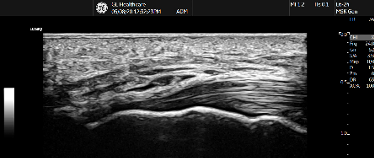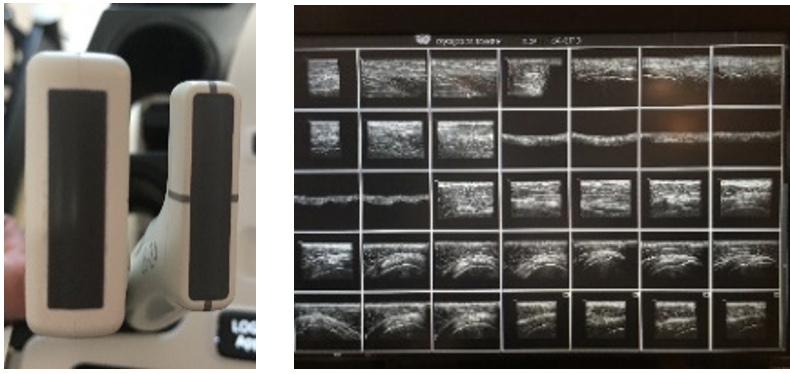
Introducing the new GE L6-24-D hockey stick probe
The popular and widely used GE L8-18i-D hockey stick probe performs very well on a range of GE ultrasound machines, especially on the latest LOGIQ E10 R2. Now there is the new GE L6-24-D probe which promises better images, comes with a slimmer footprint, and improved ergonomic design.
Does this newcomer make that much difference?
Only one way to find out:
Side by side comparison between the GE L8-18i-D and the new GE L6-24-D, so you don’t have to do it.
The setting:
One day, one room, one LOGIQ E10 R2, three models and three probes (the new L6-24-D, the L8-18i-D as well as the ML6-15-D MSK probe for occasional comparison). Machine settings were adjusted where necessary to explore the full image quality potential.
In a rush, just want to know the conclusion:
Upgrading to this probe will raise your standard of imaging!
It makes getting great images easy.
The L8-18i-D was good, this one is significantly better up to 1-1.5 cm deep. Visualising exceptional anatomical detail in superficial structures. The probe handles very well, is stable and feels light.

And now for the details:
High frequency probes are widely used within radiology, rheumatology and in MSK/sports medicine. They provide details of small, superficial anatomical structures.
Of course, to get the most out of any probe, the quality of the imaging also depends on the machine that you use and the scanning skill of the clinician.
Going up to 24MHz on the new probe should make a difference in image quality of superficial structures. And going down to 6MHz on the lower end of the available frequency should provide improvement in assessment of slightly deeper structures.
So, the questions are:
Each probe was tested on the following structures:
Proximal rotator cuff interval, distal long head of biceps, flexor digitorum, pulleys and finger joints. Carpal joints, median nerve, posteromedial and posterolateral knee joint (capsula, distal hamstring tendons, MCL & LCL), tibial and peroneal nerve, Achilles tendon, paratenon, enthesis and MTJ soleus muscle. Sural nerve. Peroneal tendons.
The findings:




So, is it worth upgrading?
Yes. Assessing small superficial structures requires the highest image quality possible. The new L6-24-D is a significant improvement on its predecessor and a leap forwards in image quality. Upgrading to this probe will raise your standard of imaging, certainly when using it on the E10 R2. It is a fantastic hockey stick probe to use alongside the MSK probe in any clinical setting.
Anything else?
Working in MSK and sports medicine, if GE could introduce the same forward leap on their already excellent MSK probe, especially for assessing deep structures, it would open a whole new and exciting chapter in muscle/tendon assessment in Sports Medicine. I am told they’re working on it…
Thanks to Jon Robinson and the GE Healthcare team for letting me take the GE L6-24-D hockey stick probe for a test drive. Great pleasure working with you all.
Robert Laus
info@ultrasoundtraining.co.uk